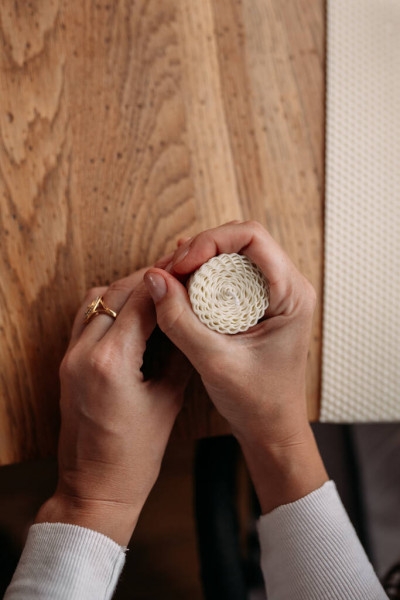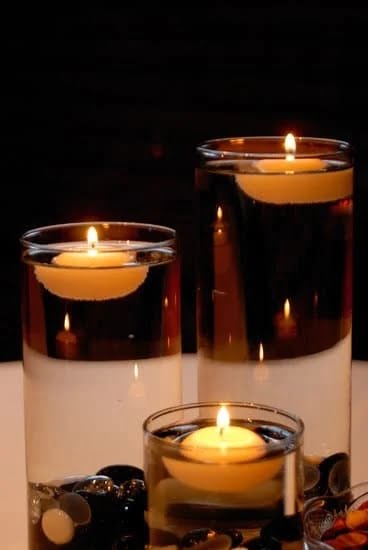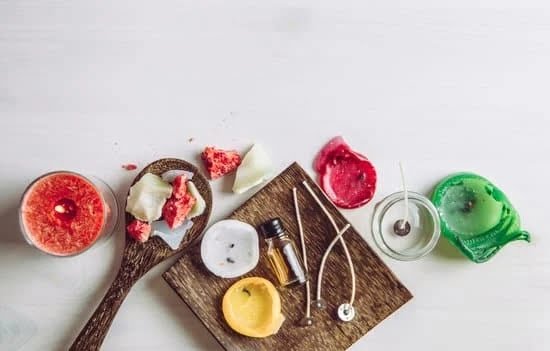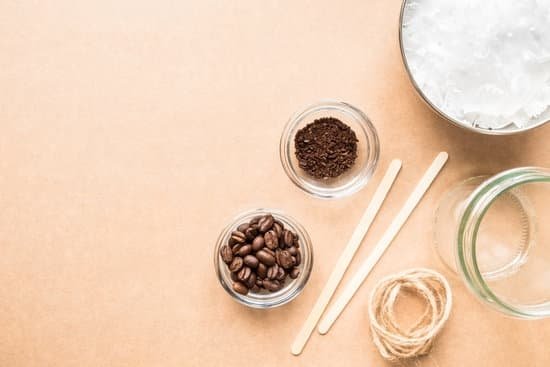Are you looking to add a touch of aroma to your candle making process? Look no further than incorporating essential oils in candle making. These natural plant extracts not only enhance the scent of your candles but also offer therapeutic benefits. Whether you’re a seasoned candle maker or a newcomer to the craft, experimenting with essential oils can elevate your creations to new heights.
Essential oils are highly concentrated plant extracts that have been used for centuries for their aromatic and healing properties. When added to candles, they infuse the wax with delightful scents that can help create a soothing atmosphere in any space. From calming lavender to invigorating citrus, the possibilities are endless when it comes to choosing the right essential oils for your candles.
In this article, we will explore the benefits of using essential oils in candle making, delve into the different types of essential oils available for crafting unique scents, provide tips on selecting high-quality oils, share tricks for mixing them effectively, and discuss safety precautions to keep in mind during the process. Get ready to discover how essential oils can take your candle making experience to a whole new level of creativity and relaxation.
Benefits of Using Essential Oils in Candle Making
When it comes to crafting candles, using essential oils can elevate your experience in many ways. Not only do they bring delightful scents to your space, but they also provide various benefits that synthetic fragrances simply cannot match. Here are some key advantages of incorporating essential oils in your candle making process:
- Therapeutic Benefits: Essential oils are known for their various therapeutic properties, such as promoting relaxation, reducing stress, improving focus, and even uplifting mood. When you use candles infused with essential oils, you can enjoy these benefits through aromatherapy.
- Natural and Non-Toxic: Unlike synthetic fragrances that may contain harmful ingredients, essential oils are derived from plants and are all-natural. This makes them a safer choice for both your health and the environment, especially if you or your loved ones have sensitivities to artificial scents.
- Customizable Scents: Essential oils come in a wide range of fragrances, offering endless possibilities for creating unique scent combinations. Whether you prefer floral notes like lavender and rose or earthy scents like patchouli and sandalwood, there is an essential oil for every preference.
In addition to these benefits, using essential oils in candle making allows you to create personalized products tailored to your preferences and needs. Whether you are looking to unwind after a long day, boost your energy levels in the morning, or create a calming atmosphere for meditation or yoga practice.
- It is always advisable to do a patch test on your skin before using any essential oil in large quantities.
- Store your essential oils away from direct sunlight and heat to preserve their potency.
- If ingesting orally provided instructions from an expert on safe consumption.
Different Types of Essential Oils for Candle Making
When it comes to using essential oils in candle making, the options are truly endless. Essential oils are derived from various plants and botanical sources, offering a wide range of scents to choose from. Each type of essential oil brings its own unique aroma and therapeutic properties to the candles you create.
Citrus Oils
Citrus essential oils such as lemon, orange, and grapefruit are popular choices for candle making due to their refreshing and uplifting scents. These oils can help boost mood, increase energy levels, and create a vibrant atmosphere in any space.
Floral Oils
Floral essential oils like lavender, rose, and jasmine are beloved for their sweet and calming fragrances. These oils can promote relaxation, reduce stress, and enhance feelings of tranquility when used in candles.
Herbal Oils
Herbal essential oils such as peppermint, eucalyptus, and rosemary bring a fresh and invigorating scent to candles. These oils are known for their revitalizing properties that can help clear the mind, improve focus, and purify the air.
Whether you prefer bright citrus notes, soothing floral aromas, or invigorating herbal scents, incorporating different types of essential oils into your candle making process allows you to customize your creations to suit your preferences and enjoy the benefits of aromatherapy at home.
How to Choose High-Quality Essential Oils for Candle Making
When it comes to choosing essential oils for candle making, quality is key in ensuring that you achieve the desired scent and therapeutic benefits. With a wide range of options available in the market, here are some tips on how to select high-quality essential oils for your candle making projects:
- Check for purity: Make sure the essential oil you choose is 100% pure and does not contain any synthetic additives or fillers. Look for labels that indicate the oil is pure and undiluted.
- Look for transparency: Opt for brands that provide clear information about the sourcing and extraction methods of their essential oils. Transparency in production processes can give you confidence in the quality of the product.
- Consider sustainability: Choose essential oil brands that prioritize sustainable practices, such as ethical sourcing and environmentally friendly cultivation methods. This ensures that you are supporting responsible producers.
In addition to these factors, it is also important to consider the reputation of the brand and read reviews from other candle makers who have used the essential oils. By taking these steps before making a purchase, you can ensure that you are using high-quality essential oils in your candle making process.
- Scent longevity: High-quality essential oils will have a longer-lasting scent when used in candles. It’s important to choose oils that maintain their fragrance over time so that your candles continue to smell great even after multiple uses.
- Therapeutic properties: If you are interested in creating candles with aromatherapy benefits, selecting essential oils with strong therapeutic properties is essential. Look for oils known for their calming, energizing, or uplifting effects depending on your desired outcome.
- Price point: While high-quality essential oils may come at a higher price point, they are worth the investment for their superior scent and therapeutic benefits. Consider it an investment in enhancing your candle making experience.
By carefully considering purity, transparency, sustainability, reputation, scent longevity, therapeutic properties, and price point when choosing essential oils for candle making, you can elevate your creations with premium scents and potential health benefits. Selecting high-quality essential oils will not only enhance the overall experience but also ensure that you are getting the most out of your homemade candles.
Tips and Tricks for Mixing Essential Oils in Candle Making
When it comes to mixing essential oils for candle making, there are a few tips and tricks that can help you create the perfect scent blend. One essential tip is to start with a base note, followed by a middle note, and finally a top note.
This layering technique ensures that the fragrance evolves as the candle burns, offering a more complex and enjoyable aroma. Experimenting with different combinations of oils can help you discover unique scents that cater to your preferences.
Additionally, it is crucial to consider the intensity of each essential oil when blending them for candle making. Some oils are more potent than others, so you may need to adjust the amount of each oil based on their strength. Starting with a small quantity and gradually adding more until you achieve the desired scent is a smart approach to prevent overpowering fragrances. Keeping track of your recipes and measurements can also help you replicate successful blends in the future.
Moreover, mixing complementary essential oils can enhance the overall therapeutic benefits of your candles. For example, pairing relaxing lavender with uplifting citrus oils like bergamot or orange can create a calming yet refreshing ambiance in your space. Being mindful of both the aromatic properties and potential health benefits of each oil can result in not only beautifully scented candles but also holistic well-being.
| Tip | Benefit |
|---|---|
| Start with base, middle, and top notes | Creates a layered fragrance experience as the candle burns |
| Adjust quantities based on potency | Avoids overpowering scents and ensures balance in the blend |
| Mix complementary oils for added benefits | Enhances both aroma and therapeutic effects of the candles |
Safety Precautions When Using Essential Oils in Candle Making
When incorporating essential oils into your candle making process, it is crucial to prioritize safety precautions to ensure a positive and safe experience. Essential oils, although natural, are potent substances that require careful handling to prevent any adverse effects. Here are some key safety measures to keep in mind when using essential oils in candle making:
Proper Dilution
Essential oils are highly concentrated plant extracts that should never be used undiluted on the skin or added directly to your candles. Always dilute essential oils with a carrier oil like coconut or almond oil before incorporating them into your candle wax. This not only ensures a balanced fragrance but also prevents any potential irritations or sensitivities.
Keep Away From Children and Pets
It is important to store your essential oils out of reach of children and pets. While these natural fragrances can uplift your space, they should be handled with care and kept away from curious hands or paws. Additionally, ensure proper ventilation when working with essential oils to prevent any overwhelming scents from affecting sensitive individuals in your household.
Labeling and Storage
To avoid any confusion or accidents, it is recommended to label all containers holding essential oils clearly. Keep them stored in a cool, dark place away from direct sunlight and heat sources. This will help maintain the potency of the oils and prevent any degradation over time. Proper storage also decreases the risk of accidental spills or leaks that could lead to skin irritation or damage to surfaces.
By following these safety precautions, you can enjoy the benefits of using essential oils in candle making without compromising on your well-being or the well-being of those around you. Remember that caution and mindfulness go hand in hand with creating beautiful and fragrant candles infused with the power of nature’s essences.
Popular Essential Oil Combinations for Candle Making
When it comes to creating the perfect ambiance at home, choosing the right essential oil combinations for your candles can make a significant difference. Combining different essential oils can create unique and delightful scents that cater to your preferences. Some popular essential oil combinations for candle making include lavender and vanilla for a calming atmosphere, citrus and mint for a refreshing aroma, and rosemary and lemon for an invigorating scent.
One of the key benefits of using essential oils in candle making is the versatility it offers in creating personalized scents. By blending various essential oils together, you can tailor the fragrance of your candles to suit different moods or occasions. Whether you prefer floral, fruity, or herbal scents, there are endless possibilities when it comes to mixing essential oils for candle making.
In addition to the aromatic benefits, combining different essential oils in candle making also allows you to experience the therapeutic properties of these natural substances. For example, lavender essential oil is known for its relaxing properties, while eucalyptus oil can help promote clear breathing. By carefully selecting and blending essential oils in your candles, you can enhance not only the scent but also the overall well-being of your space.
| Popular Essential Oil Combinations | Benefits |
|---|---|
| Lavender and Vanilla | Calming atmosphere |
| Citrus and Mint | Refreshing aroma |
| Rosemary and Lemon | Invigorating scent |
DIY Essential Oil Candle Making Recipes
Candles have been used for centuries to create ambiance, add fragrance, and provide relaxation. Incorporating essential oils in candle making not only enhances the scent but also brings therapeutic benefits to your space. By infusing your homemade candles with essential oils, you can create a truly personalized and aromatherapeutic experience.
When creating DIY essential oil candles, it is important to select the right combination of oils that complement each other well. Some popular essential oil combinations for candle making include lavender and lemon for a calming and refreshing blend, or eucalyptus and peppermint for an invigorating and energizing aroma. Experimenting with different essential oil blends can help you discover unique scents that suit your preferences.
To make your own essential oil candles at home, start by choosing a high-quality wax such as soy or beeswax, along with lead-free wicks and heat-resistant containers. Melt the wax using a double boiler method, then carefully mix in your chosen essential oils once the temperature has cooled slightly.
Pour the mixture into containers, place the wicks in the center, and allow them to set before trimming the wick to the desired length. With just a few simple steps, you can enjoy the benefits of aromatherapy through beautifully crafted candles.
Conclusion
In conclusion, the use of essential oils in candle making adds a whole new dimension to the craft. Not only do they offer enticing aromas that can uplift your mood and ambiance, but they also bring various benefits to your health and well-being. By incorporating essential oils into your candle-making process, you are not just creating a beautiful scented candle, but also a holistic experience that engages your senses.
Choosing high-quality essential oils is crucial in ensuring that you achieve the desired scent profile and therapeutic benefits in your candles. It is essential to source pure and natural oils from reputable suppliers to guarantee the potency and authenticity of the fragrance. Additionally, following safety precautions when handling essential oils during the candle-making process is paramount to prevent any potential hazards or adverse reactions.
Whether you are a novice or an experienced candle maker, experimenting with different essential oil combinations can lead to unique and delightful fragrances for your candles. From floral blends to earthy notes, the possibilities are endless.
By exploring various DIY essential oil candle recipes, you can unleash your creativity and personalize your creations according to your preferences. Ultimately, the power of essential oils in elevating your candle-making experience cannot be understated-it adds depth, character, and wellness benefits to every lighted moment.
Frequently Asked Questions
Can You Use Essential Oils in Candle Making?
Yes, essential oils can be used in candle making to add fragrance to the candles. However, it is important to choose high-quality essential oils specifically designed for use in candles to ensure safety and optimal results.
What Is the Best Essential Oil Blend for Candles?
The best essential oil blend for candles ultimately depends on personal preference. Popular choices include relaxing lavender with uplifting citrus, calming chamomile with soothing vanilla, or refreshing eucalyptus with invigorating mint. Experimenting with different combinations can help create a unique scent that suits individual tastes.
How Many Drops of Essential Oil Do You Put in a Candle?
The number of drops of essential oil to put in a candle depends on the type and size of the candle, as well as the desired strength of the fragrance. As a general guideline, most candle makers recommend using about 30-40 drops of essential oil per 8 ounces of wax for a medium-strong scent.
Adjustments can be made based on personal preference for lighter or stronger aromas. Overloading a candle with essential oils can affect its burning quality, so it’s important not to exceed the recommended amount.

Welcome to my candle making blog! In this blog, I will be sharing my tips and tricks for making candles. I will also be sharing some of my favorite recipes.





